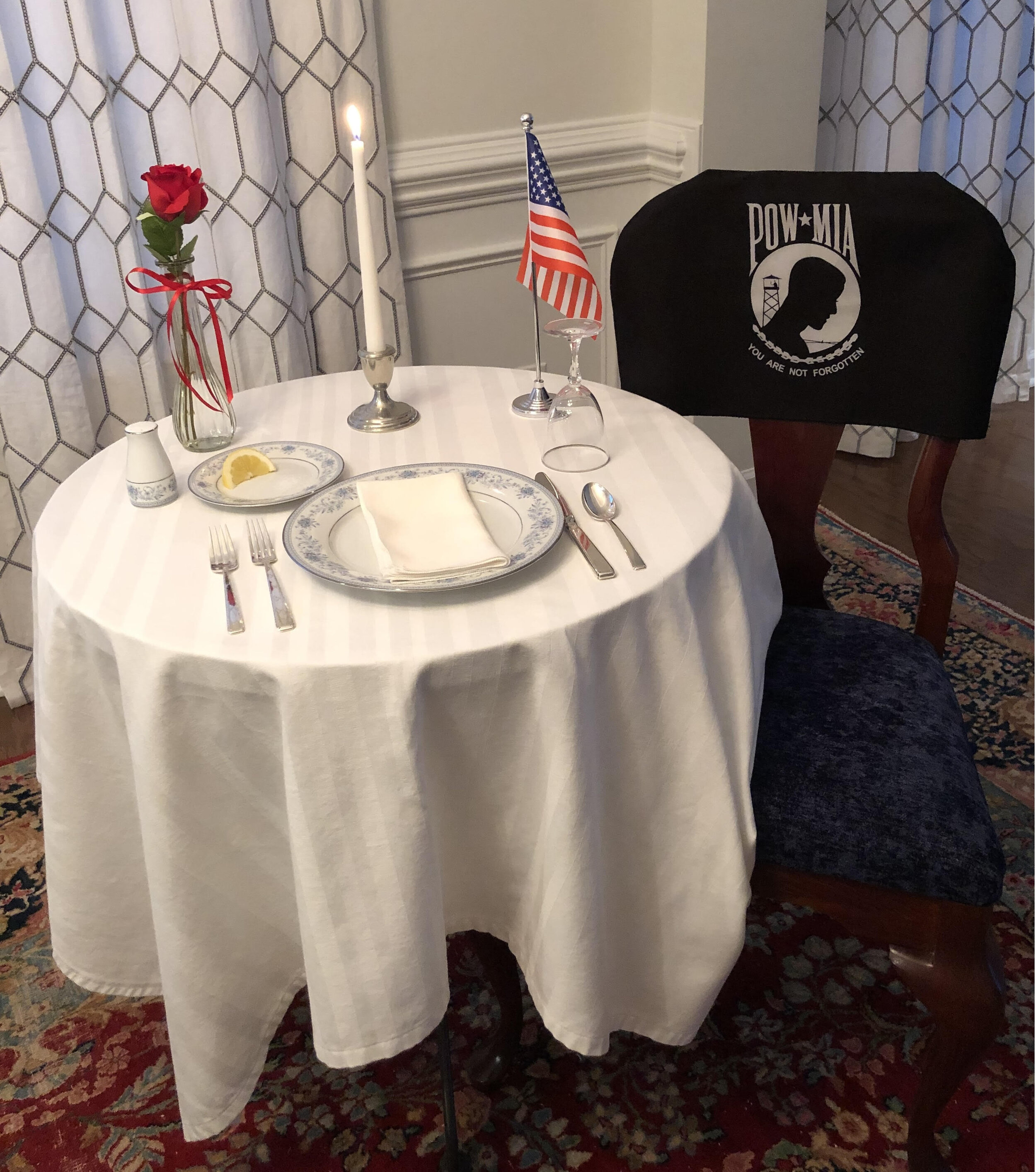THE POW/MIA TABLE
The tradition of setting a separate table in honor of our prisoners of war and missing comrades has been in place since of the end of the Vietnam War. The manner in which this table is decorated is full of special symbols to help us remember our brothers and sisters in arms.
The table is small, symbolizing the frailty of one prisoner, alone against his or her suppressors.
The tablecloth is white, symbolic of the purity of their intentions to respond to their country’s call to arms.
The single rose in the vase signifies the blood they may have shed in sacrifice to ensure the freedom of our beloved United States of America. This rose also reminds us of the family and friends of our missing comrades who keep faith while awaiting their return.
The red ribbon on the vase represents an unyielding determination for a proper accounting of our comrades who are not among us.
A slice of lemon on the plate reminds us of their bitter fate.
The salt sprinkled on the plate reminds us of the countless fallen tears of families as they wait.
The glass is inverted. They cannot toast with us at this time.
The chair is empty. They are NOT here.
The candle is reminiscent of the light of hope, which lives in our hearts to illuminate their way home, away from their captors, to the open arms of grateful nation.
The American Flag reminds us that many of them may never return – and have paid the supreme sacrifice to insure our freedom.
Adapted from The American Legion 2020 Officer’s Guide and Manual of Ceremonies and from The POW/MIA Table: A Place Setting for One, a Table for All by the Naval History and Heritage Command Communication and Outreach Division

